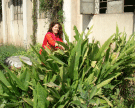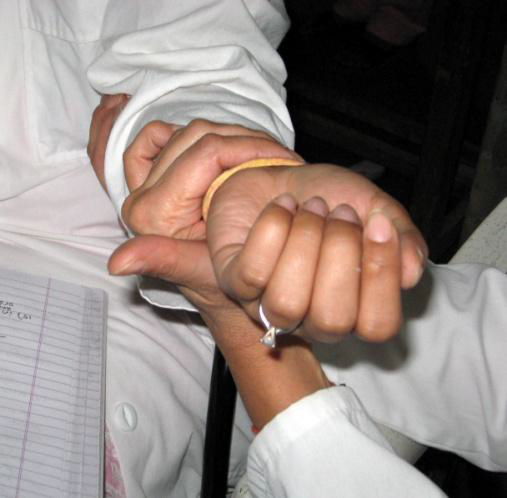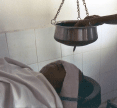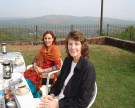






 |
      |
|
About Ayurveda The word Ayurveda is a Sanskrit word that evolves from combination of two words, "Ayuh" meaning life and "veda" meaning knowledge. Ayurveda "Science of Life" or "wisdom of life" deals with nature and includes all aspects of life. Ayurveda is a 6000year old science that originated in India and the components and concept of Ayurveda is rooted in Vedas, the ancient book of knowledge that dates around 3000BC. The component of the science that deals with health and disease is known as Ayurvedic Medicine and came into existence around 1000BC. Ayurvedic Medicine is the world's oldest comprehensive health care system and is indigenous to India where it is widely practiced. "This ancient art of healing asserts that the science, philosophy and spirituality are all necessary aspects of healthy living." Thus Ayurveda is not only a comprehensive medical system but also a way of living and the very concept of "mind, body and spirit" originates from Ayurveda. It is now one of the most recognized and widely practiced disciplines of alternative medicine in the world. Some of the popular practices of Ayurveda are Meditation, Yoga, chanting, breathing exercises, Panchakarma and Herbs. For more information please visit www.ayurvedahealth.org. Ayurveda is recognized by The National Health Institutes/Center for Complementary and Alternative Medicine (NIH)/ NCCAM) as an Alternative Medicine, a complete medical system, website http://nccam.nih.gov. Ayurvedic Definition of Health Adopted by the World Health Organization (WHO) Sam dosha, samagni, samdhatu malakriyah Health is in balance when all three doshas (bioenergy) and agni (metabolic process) are in balance, and excretions are in proper order. When atman (soul), senses, manah (intellect) are in harmony with internal peace, the svastha (optimal health) is achieved. Ayurvedic Classics: Are written in Sanskrit and are a major source of information. Major Ayurvedic Classics (Brhattrayi) Charak Samhita by Charaka Charak Samhita, which dates back to approximately 800 BCE, is a major compendium of Ayurvedic medical theory and practice that Charaka, an internist at the University of Taxila, compiled in Sanskrit. Presented as poetry, Samhita contains more than 8,400 verses in its 120 chapters. Modern Ayurvedic physicians still use Samhita in their medical training, and the text has been widely translated. The most widely recommended translation is one by Dr. P.V. Sharma, which contains extensive appendices and a rich index. Sushruta Samhita by Sushruta This surgical text, which dates back to approximately 700 BCE, contains seminal content such as the Ayurvedic definition of health, information on blood, and the description of five sub-doshas of Pitta and the marma points. This volume also includes pioneering techniques in skin grafting and reconstructive surgery. Ashtanga Sangraha and Ashtanga Hridaya by VagbhataAshtanga Sangraha and Ashtanga Hridayam, dating back to approximately 400 CE, were written by an Ayurvedic physician from the Sindh region of India. The Sangraha is primarily written in poetry, while The Hridayam is presented as prose. These texts define the five subdoshas of Kapha and emphasize the material value of life. The Hridaya is still highly regarded as a primary Ayurvedic medical textbook; Srikantha Murthy's translation is recommended for English readers. Minor Ayurvedic Classics (Lghutrayi) Sarangadhar Samhita by Sharngadhara This text was written in the 13th century CE, and is valued for its explanation of the Ayurvedic concept of materia medica, as well as for its pharmacological formulations. It is also considered the foremost text on pulse diagnosis. Bhav Prakash Nighantu by Bhavamisra This 16th century text contains approximately 10,278 verses of varying meters and focuses on herbal descriptions, food, the therapeutic use of trace metals, and rejuvenation therapies. Information on sexually transmitted diseases, particularly syphilis, is also included. Madhava Nidan by Madhava KaraThis text was written between 700 CE and 1100 CE, and is valued for its precise classification of diseases and disease etiology, particularly in the fields of pediatrics and toxicology. Madhava Nidan is considered the Bible for Ayurvedic clinical diagnosis. Ayurvedic Approach to Health and Wellness To maintain the health of a healthy person and cure the disease of a diseased. Preventive Medicine – Creates and maintains health and longevity of an individual by maintaining balance of a person's prakturi (or constitution) by creating daily and periodic regimens. These health routines focus on diet and exercise, herbals, massage, meditation, and social behavior and positive relationships. Curative Medicine – Treatments to cure the disease by one or combination of the following approaches: • Internal measures, including shodhana (detoxification) and shamana (methods used to improve quality of life via palliative care).
Ayurvedic Specialties Ayurvedic medicine features the following eight specialty branches. These trainings are achieved at accredited Ayurvedic medical Schools. • Internal Medicine (Kaya-Chikitsa), which focuses on doshic imbalance, metabolic function, and digestion.
Safety and Efficacy of Ayurvedic Medicine Ayurvedic Medicine is recognized by the WHO and is used safely by millions of people. However, like any other medical system, Ayurvedic therapies have contraindications and potential for adverse effects or side effects. This is of particular concern when therapies are prescribed by unqualified practitioners, are not used correctly and are abused by self prescription. Ayurveda does not propagate that herbs are safe. Panchakarma (detoxication) should be performed only by qualified Ayurvedic practitioners who are trained in this sub-specialty. Consumers must bear responsibility when seeking Ayurvedic therapies to check the credentials, training, and experience of the practitioners. Consumers must also communicate, with their conventional and Ayurvedic practitioners and practice full disclosure about the therapies they are using. It is important to note that the United States Food and Drug Administration does not regulate herbs or dietary supplements. The International Society for Ayurveda and Health (ISAH), a professional society of Ayurveda in the United States, recommends Ayurvedic therapeutic herbal use or detoxification only when prescribed, administered and properly supervised by a trained practitioner. When seeking Ayurvedic practitioner, ISAH recommends partnering with a practitioner who holds a doctoral degree (e.g., M.D., Ph.D., or Phys.D.) and has completed training at a recognized Ayurvedic medical school. References Kumar, A, Singh, OP, Laxmi: Clinical Study to Assess the Role of an Ayurvedic Procedure (Akshitarpan) in Childhood Computer Vision Syndrome.ELEMENTS, 8 (1) 2010 Sharma, H and. Naik, Suresh Ramnath; Thakare, Vishnu Namdeorao; and Joshi, Falguni P: Functional Foods and Herbs as Potential Immunoadjuvants and Medicines in Maintaining Healthy Immune System: A Commentary," Journal of Complementary and Integrative Medicine: Vol. 7: Iss. 1, 2010 Gutmann, JM and Guha, A: A Comparison of Western and Ayurvedic Approach to Cholesterol. ELEMENTS, 7 (1) 2009. Sharma, AK: Ayurvedic management of Hypothyroidism with Herbal Formulations. ELEMENTS. 7(1), 2009. Guha A: Vitalistic Philosophy - Ayurveda. Proceedings of the Vitalism Conference, 60-6, 2009. Guha, A: Anxiety: A Case Study. Elements, 6(2), 10-13, 2008. Ziegler, K: Pizza Examined Through an Ayurvedia Lens. Elements, 6(2), 13-16, 2008. Kumar A: Autism Spectrum Disorder and Ayurvedic Approach of Management. ELEMENTS, 5(2), 2007. Vora A and Kathawate R: Western and Ayurvedic Assessment of a Patient with Spastic Hemiplegia. J ELEMENTS. 5(2), 2007. Kathaware, R.S.: The Ethics of Ayurvedic Massage Therapy. J Elements, 5(1), 2007. Dhanasekaran, M., Tharakan, B., Holcomb, L. A., Hitt, A. R., Young, K. A., and Manyam, B. V. (2007). Neuroprotective mechanisms of ayurvedic antidementia botanical Bacopa monniera. Phytotherapy Research, 21(10), 965-969. Pandey, M. M., Rastogi, S., and Rawat, A. K. (2007). Saussurea costus: botanical, chemical and pharmacological review of an ayurvedic medicinal plant. Journal of Ethnopharmacology, 110(3), 379-390. Guha, A., Sharma, H.P: Ayuvedic Bhasmas. J Elements, 3(1), 2005. |